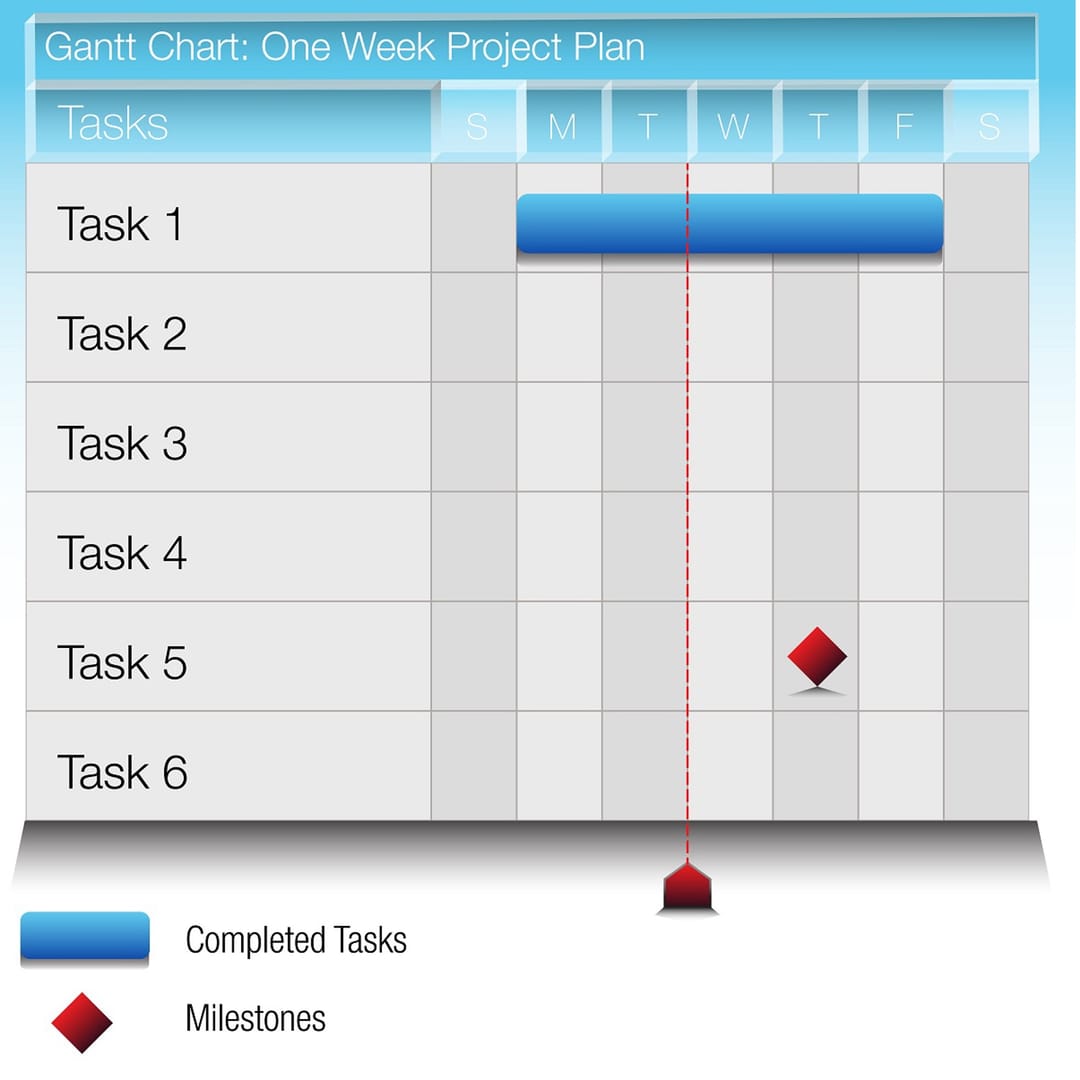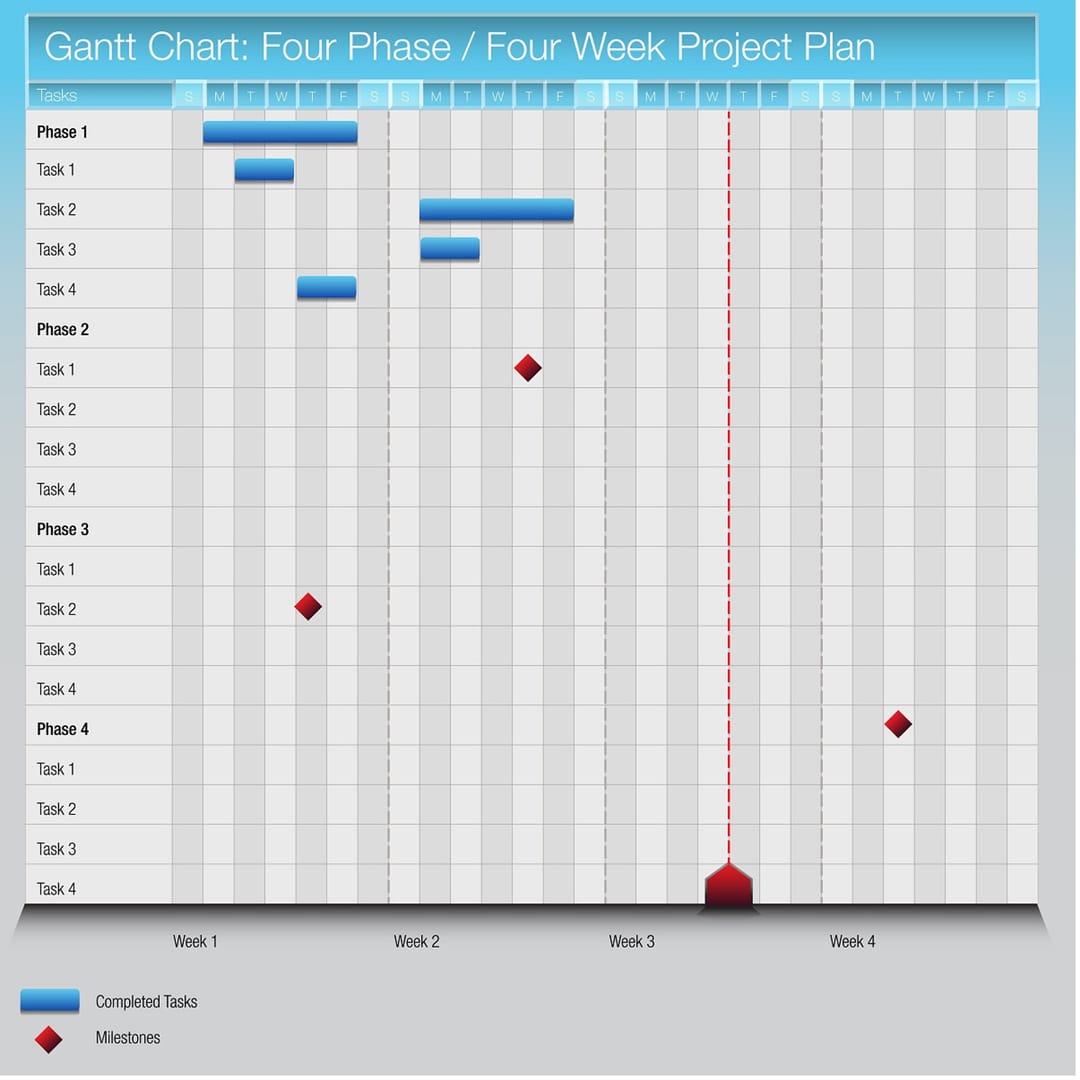Business News Daily provides resources, advice and product reviews to drive business growth. Our mission is to equip business owners with the knowledge and confidence to make informed decisions. As part of that, we recommend products and services for their success.
We collaborate with business-to-business vendors, connecting them with potential buyers. In some cases, we earn commissions when sales are made through our referrals. These financial relationships support our content but do not dictate our recommendations. Our editorial team independently evaluates products based on thousands of hours of research. We are committed to providing trustworthy advice for businesses. Learn more about our full process and see who our partners are here.
What is a Gantt Chart?
These essential project management tools provide a timeline for each task and help monitor a project's progress.
Table of Contents
Businesses and employees today face a wealth of choices when it comes to productivity apps and project management tools. While the effectiveness of these tools often comes down to personal preference and the likelihood of employees reliably using these tools, some tools are overall more effective than others. Gantt charts, in particular, have proven to be a reliable project management tool for over a century.
Gantt charts provide a helpful, visual method of tracking tasks under a larger project. Depending on the size of the project and the organization, Gantt charts can track multiple users and tasks over the course of days to years. This range of utility makes these charts extremely useful, while also providing a slight barrier to entry for new users. The following article will explain what Gantt charts are, how to use them and how they are useful in business.
What is a Gantt chart?
A Gantt chart, or Gantt diagram, is a project management tool used to analyze and plan projects. Developed in 1917 by Henry L. Gantt, an American engineer and social scientist, the Gantt chart is a horizontal bar chart designed to track specific tasks in a project. Simple Gantt charts can be created on graph paper, or more complex automated charts can be created using project management apps, like Microsoft Project, SharePoint or Excel. Gantt chart templates can be found online.
How does a Gantt chart work?
When planning a Gantt chart, certain activities are dependent on other activities being completed first. Known as “sequential” or “linear” tasks, these need to be completed before other tasks can begin. An example would be the creation of collateral, which needs to be done before the distribution of collateral can begin. Activities that don’t have to be done in a specific sequence are called “parallel” tasks. While they don’t have to be done in a specific order, they may sometimes need other tasks to be completed first.

This Gantt chart shows a simple one-week plan. Credit: John T. Takai | Shutterstock
Before drawing up the chart, create a list of all activities in the plan, the estimated length of time it will take, and whether it is parallel or sequential. Show which stages they depend on. It’s best to do this using a table so that your tasks are kept organized.
Drawing a Gantt chart
Now you are ready to draw up the chart. A Gantt chart includes a horizontal axis representing the time span of the project, broken down into increments of days, weeks or months. The vertical axis represents the tasks needed to be completed for the project. The horizontal bars of varying lengths represent the time span for each task. For example, if preparing a proposal, the first task may be “conduct research,” which would go at the top of the vertical axis. Draw a bar on the graph that represents the time you expect the research will take.

This Gantt chart shows a four-phase, four-week project plan. Credit: John T. Takai | Shutterstock
Enter the other tasks below “conduct research,” and draw representative bars for the time you expect to spend on them. Bar spans may overlap for tasks that are being worked on simultaneously. For example, you may conduct research at the same time you are deciding on a budget.
Once the Gantt chart is complete, you can assign team members to various activities with a clear sense of their deliverables and the timeline for completion of their tasks. The Gantt chart provides a big-picture look at the project and gives an overhead perspective for the project managers of how well it is progressing.
Monitoring progress
As the project continues, different colors, arrowheads or other markers can be added to indicate the status of tasks, such as partially or fully completed. With a Gantt chart, users can easily monitor a project’s progress. It’s easy to see what should have been achieved at any given point in time, and if tasks are projected to miss deadlines, remedial action can be taken to bring the project back on course.
How are Gantt charts useful in business?
Gantt charts can help users better understand the timing of a project. By visualizing the project across a timeline, business leaders, managers and employees can have a better sense of due dates and competing priorities. This can help strengthen time management skills and ensure that a project will meet the predetermined deadlines.
From a managerial and project management perspective, Gantt charts can also be useful to help view contributor milestones and workloads. For instance, if a manager knows Employee A already has three overlapping tasks for a project in the chart, it may make more sense to assign future overlapping tasks to Employee B.
Gantt charts can also help stakeholders in a project keep open lines of communication, especially for teams with remote employees. As long as a chart is updated faithfully, the project manager and all stakeholders can quickly use it to monitor progress. Online project management tools allow for remote syncing of charts, helping remote teams to collaborate in real time.
Looking ahead with Gantt charts
One major problem with Gantt charts is that they don’t indicate task dependencies. If one task falls behind schedule, how will that affect other tasks? The PERT chart, another project management charting tool, is an alternative designed to do so.
Automated Gantt charts, created with software, generally store more information about the tasks. With programs like this, Gantt charts can include the individuals assigned to each task and notes about the procedure, and they enable users to easily make changes.
The Gantt chart is a dynamic tool. Expect them to get adjusted frequently to reflect the actual status of project tasks, as projects rarely stay with the original plan.











